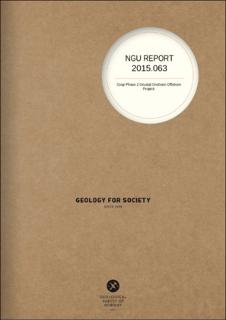| dc.contributor.author | Olesen, Odleiv | |
| dc.contributor.author | Baranwal, Vikas | |
| dc.contributor.author | Brönner, Marco | |
| dc.contributor.author | Dalsegg, Einar | |
| dc.contributor.author | Dumais, Marie-Andrée | |
| dc.contributor.author | Gellein, Jomar | |
| dc.contributor.author | Gernigon, Laurent | |
| dc.contributor.author | Heldal, Tom | |
| dc.contributor.author | Larsen, Bjørn Eskil | |
| dc.contributor.author | Lauritsen, Torleif | |
| dc.contributor.author | Lutro, Ole | |
| dc.contributor.author | Maystrenko, Yuriy | |
| dc.contributor.author | Nasuti, Aziz | |
| dc.contributor.author | Roberts, David | |
| dc.contributor.author | Rueslåtten, Håkon | |
| dc.contributor.author | Rønning, Jan Steinar | |
| dc.contributor.author | Slagstad, Trond | |
| dc.contributor.author | Solli, Arne | |
| dc.contributor.author | Stampolidis, Alexandros | |
| dc.coverage.spatial | TRØNDELAG | |
| dc.coverage.spatial | MØRE OG ROMSDAL | |
| dc.date.accessioned | 2023-03-22T12:15:29Z | |
| dc.date.available | 2023-03-22T12:15:29Z | |
| dc.date.issued | 2015 | |
| dc.identifier.issn | 0800-3416 | |
| dc.identifier.uri | https://hdl.handle.net/11250/3059840 | |
| dc.description.abstract | The Crustal Onshore-Offshore Project (Coop) is an integrated mapping and research project established to study the onshore-offshore relationships in the northeastern North Sea and Mid Norway. The Coop Phase 2 Report summarises the results from the Mid Norway and Møre Margin-Haltenbanken region. New aeromagnetic, radiometric and petrophysical data have been acquired. All new data were compiled with the Coop Phase 1 data from western Norway and the North Sea. Information on mainland basement structures, deep weathering and heat production has been extrapolated to the offshore region. The newly identified Folda-Rørvik-Brønnøysund shear zone appears to represent an old and major continental, strike-slip feature along the coast of central Norway. This shear zone probably influenced the offshore prolongation of the Kollstraumen and Høybakken detachments. We conclude that the Norwegian strandflat is an exhumed weathered and peneplaned surface of Late Triassic to Early Jurassic age that has been modified and levelled during Pleistocene erosion. This surface was preserved beneath Late Jurassic and Cretaceous strata until the Neogene. Support for this conclusion comes from the AMAGER mapping and the occurrence of a relatively flat and gently westward-dipping top of basement beneath the Jurassic sedimentary rocks close to the coastline. The heat generation of the mainland basement rocks has been calculated from the chemical analyses of the U, Th and K contents in c. 2600 bedrock samples and airborne radiometric measurements along the coast of western and central Norway. The heat generation varies with one order of magnitude. The Precambrian granitic gneisses in Nord-Trøndelag show the highest heat production within the Coop2 study area. An area of increased radiogenic heat production also dominates the central part of the offshore area through the Cretaceous and Cenozoic stratigraphic intervals and implies a possible inheritance from the transport of eroded clastic material from the same erosional area. 2D\/3D crustal models of the Mid Norway mainland and offshore have been established from gravity, magnetic, seismic, well log and bedrock mapping data. The Frøya High is interpreted as a Precambrian granitic complex quite similar to the magnetic Transcandinavian Igneous Belt (TIB) granitoids observed in Sweden and Norway. Similar high-density lower-crustal bodies in the central\/outer Møre Basin, are most likely related to the pre-breakup heterogeneities in the lower continental crust. Our model lends no support for an extensive serpentinisation of the mantle where the preserved continental crust is relatively thick. By attributing thermal properties (e.g., radiogenic heat production and thermal conductivity) to the individual basement bodies we have calculated the heat flow from the basement into the sedimentary basins. The observed and modelled heat flow is strongly controlled by the lithology and structures in the crust. Plans for Coop Phase 3 are summarised at the end of the report. | |
| dc.language.iso | eng | |
| dc.publisher | Norges geologiske undersøkelse | |
| dc.relation.ispartofseries | NGU-Rapport (2015.063) | |
| dc.rights | Navngivelse 4.0 Internasjonal | |
| dc.rights.uri | http://creativecommons.org/licenses/by/4.0/deed.no | |
| dc.subject | TOLKNING | |
| dc.subject | VARMESTRØM | |
| dc.subject | GEOFYSIKK | |
| dc.subject | KONTINENTALSOKKEL | |
| dc.subject | BERGGRUNNSGEOLOGI | |
| dc.subject | MAGNETOMETRI | |
| dc.subject | GRAVIMETRI | |
| dc.subject | PETROFYSIKK | |
| dc.title | Coop Phase 2 Crustal Onshore-Offshore Project | |
| dc.type | Report | |
| dc.description.localcode | 63684 | |
| dc.source.pagenumber | 410 | |
| dc.relation.project | (336600) North Sea Crustal Onshore-Offshore Project (COOP) | |

